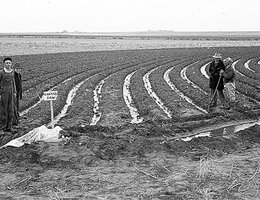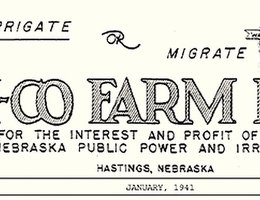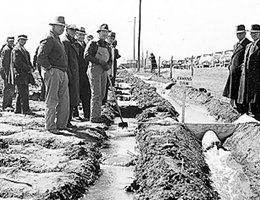

When the Central District first delivered water through the Tri-County Project, most farmers had no experience with irrigation. Irrigation methods, such as simply flooding a field with water or the use of canvas dams and lath boxes in small ditches next to the fields, were crude and inefficient. But irrigation — no matter how labor intensive or imperfect — often made the difference between harvesting a good crop or a poor crop (or none at all).
Making use of a temporary diversion dam located on the Platte River about 10 miles southeast of Lexington, the Central District first delivered water to the new canals during the spring of 1938. Only about 3,300 acres received up to nine inches of water that summer, but the irrigated fields produced yields that were significantly higher than non-irrigated fields.

The Central District sponsored demonstration days to show farmers how to use the water. One such “irrigation school” was held on April 28-29, 1938, on a farm northwest of Holdrege. Led by an irrigation specialist from the University of Nebraska Agricultural College’s Extension Service, the event attracted 10,000 people who wanted to learn how to irrigate their fields or who were just curious to see the modern marvel of an irrigation project.

Corn yields jumped from an average of 28 bushels/acre (one acre is about three-fourths the size of a football field, or about 70 yards square) in the 1920s to more than 100 bushels/acre from fields under irrigation in the 1940s. Farmers today using modern farming practices and irrigation commonly harvest well over 200 bushels/acre.
After construction of the project was assured, farmers who had never irrigated their fields had to learn how to use the water delivered by the system. Farmers were taught how to use such tools as canvas dams, lath boxes, and other early irrigation equipment, including one with which they were already familiar, but came to know even better — the shovel. Properly irrigating fields in the 1940s was a time-consuming and backbreaking process that included use of a shovel to open and close furrows connecting the small, side laterals to the fields.